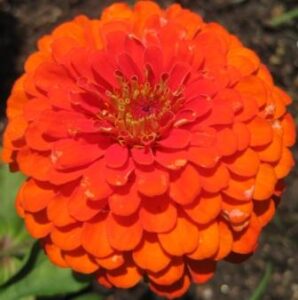 The Grady’s lineage is a branch of Haplogroup R, specifically R-Y49137.
The Grady’s lineage is a branch of Haplogroup R, specifically R-Y49137.
Note: this has been updated since Mike tested for the Big Y dna test — see next paragraph. The point of origin of R is most likely thought to be Eurasia. It’s the most frequently occurring Y haplogroup in Western Europe. It would be great if more Grady cousins, or even better, an uncle or 2 were tested. That would help to narrow things down considerably. Kudos to those of you who have already done so! According to FamilyTree DNA,
“The R-FTC36164 Story
Haplogroup R-FTC36164 represents a man who is estimated to have been born around 1,500 years ago, plus or minus 450 years.
That corresponds to about 500 CE with a 95% probability he was born between 95 and 834 CE.
This was a chap named Szólád 27B, who lived 419 – 523 CE (the Middle Age) in, guess where….Szólád, Cserénfa, Hungary was a greatetc. uncle. Most likely, he was associated with the Longobard Barbarian group. He and we share an ancestor who lived 2450 BCE.
R-FTC36164’s paternal line was formed when it branched off from R-Y49137 and the rest of mankind about 1,550 years ago, plus or minus 400 years.
He is the most recent common ancestor of at least 2 lineages known as R-Y53682 and 1 yet unnamed lineage.”
and …..in a related piece from FTDNA:
“The R lineage began in West Asia. It is the descendant of the major R-M343 lineage. From West Asia R-L2 has spread across Europe, Central Asia, and North Africa. This line includes some members from the Jewish Diaspora.” If you are a Grady, and have been DNA tested, please contact us.”
November 2020 Update: My fav genetic genealogy blogger, Roberta Estes from DNA Explained wrote about the latest work on the Irish lineages.
I’m only beginning to process that. But, I promise updates soon. July 2021 update: the latest Big Y dna results are in! … and our Grady line is a descendent of R-Y49137. Current matches are a Martin Shannon, whose ancestors (born abt. 1804) are from Dublin/ Longford Ireland. September 2023 update: The ftDNA GLOBETREKKER tool now shows our earliest known ancestor (Szolad) who lived about 500 CE , lived near the border of County Kildare and County Laois.
Ancestry.com tells us that the Grady name is a “reduced Anglicized form of Gaelic Ó Gráda ‘descendant of Gráda’, a byname meaning ‘noble’ (see O’Grady).reduced Anglicized form of Gaelic Mag Bhrádaigh (see McGrady).”
Here is what Wikipedia has to say about the origins of the name:”The O’Grady family, also styled O’Grady of Kilballyowen, is one of Ireland’s noble families and surviving Chiefs of the Name. Their title is: The O’Grady in English and O Grádhaigh in Gaelic. The current Chief of the Name is Henry Thomas Standish O’Grady, The O’Grady, who resides in France.
They belong to the Dál gCais kindred and are distant cousins to the famous O’Brien dynasty, but have since the Middle Ages been based not in County Clare, from where they originated, but in County Limerick. The (former) seat of the family, Kilballyowen, is near the town of Bruff.” If we look at a modern map, there are three Kilballyowens in Ireland!
To learn of Joseph Benedict Fenwick Grady, vice president of the Borden Condensed Milk company, please click on his long and illustrious name.
To learn about JBF’s brother John David William Grady, born in North Carolina, please click on his name.
If you’d like to hit the John Grady wall, please read his story.
Always fun to look at the famous relatives on the line and Family Tree DNA provides a few of those with stories. Richard de Percy, involved in the Magna Carta at Runnymede in 1215. His father’s name was Jocelyn of Louvain, who changed it to Percy….leading to the House of Percy. You can read more at FamilyTree DNA and British Nobles Barons Gentry DNA Project.